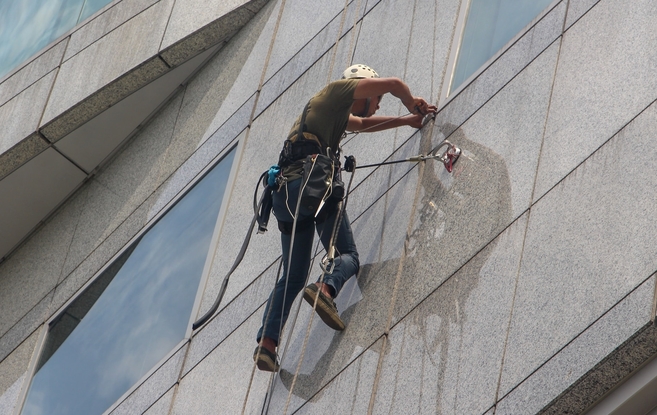
When working at height, it’s important to do everything possible to ensure the safety of yourself and everyone around you.
This can mean ensuring you’re using quality equipment, that any necessary tests, checks, and inspections have been carried out, and knowing the terms and expressions that are being used on your site.
Just like any golfer knows to duck when they hear ‘fore!’, any individual working at height needs to know certain terms to make sure that they’re doing everything they can to ensure their personal safety and the safety of those around them.
If you work at height, you may have heard the terms ‘clearance’ and ‘clear distance’ being used. Although they sound like they might be interchangeable, they have two different meanings, and getting them confused could be potentially dangerous.
Clearance: the distance between the anchorage point and the first obstacle (for example the floor, ledge, anything an individual might hit as they fall), including a 1 metre safety distance.
Clear Distance: Clear distance is the distance from the working area to the first obstacle, again with a 1 metre safety distance allowance.
As you can see, although these expressions are similar, confusing the two could have potentially dangerous consequences.
How to Calculate Clearance:
When calculating clearance, you use a different formula for lanyards with energy absorbers than you do retractable fall arresters:
Clearance for Energy Absorbers:
Length of lanyard + Absorption distance + User height (from feet to harness attachment point) + Safety distance (1m) = Clearance.
Clearance for Retractable Fall Arresters:
Required locking distance + Absorption Distance + User height (from feet to harness attachment point) + Safety distance (1m) = Clearance.
When it comes to making important safety calculations, it’s always better to be safe than sorry. If you have any questions about clearance, clear distance, or any other queries regarding safety when working at height, reach out and contact us today.
A member of our customer service team will be happy to answer any questions you may have, and help you ensure you and your team are safe.
Contact Us
Read More: Safety Harness Types: What Do You Need?

